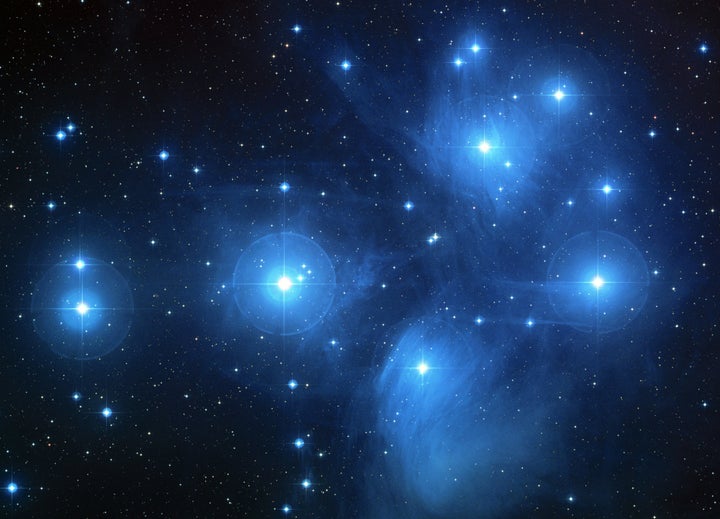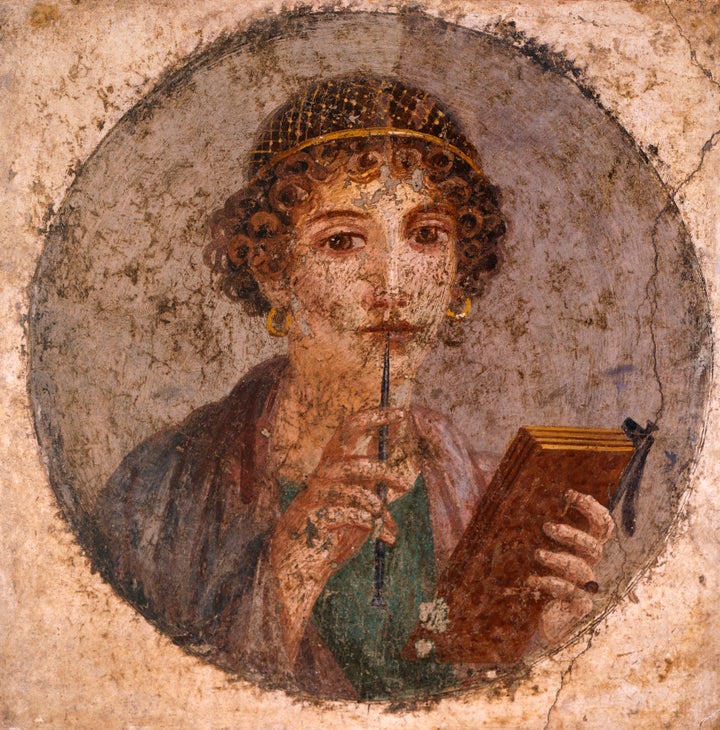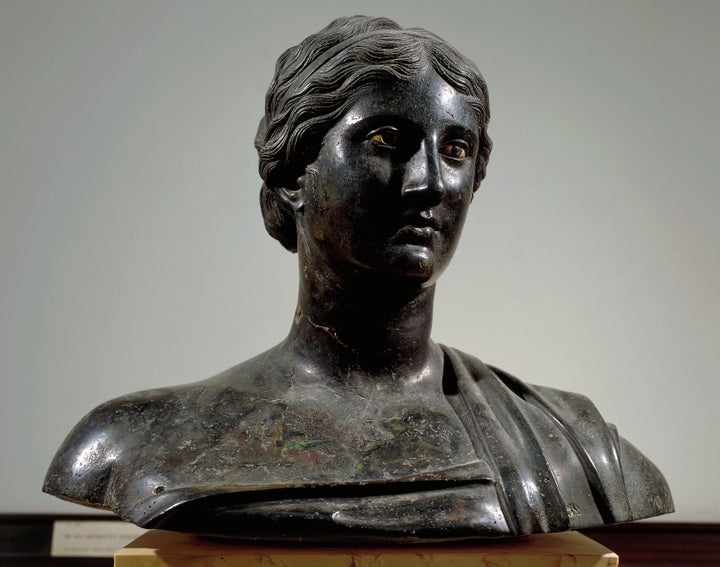
How do you date accurately a 2,500 year old Ancient Greek poem when you have nothing to go one but the name of the author and the words of the poem itself?
This was the daunting task that faced physicists and astronomers from the University of Texas at Arlington when they decided to accurately date the lyric poet Sappho's "Midnight Poem".

Why this particular poem? Well because it contained something very unique - a piece of evidence hidden within the text which could now allow scientists to accurately decipher almost exactly when it was written.
You see "Midnight Poem" contains within it not only a description of the star cluster Pleiades (seen above) but then goes on to explain its movement through the night sky.
The moon has set
And the Pleiades;
It is midnight,
The time is going by,
And I sleep alone.
(Henry Thornton Wharton, 1887:68)
This three simple lines gave the researchers just the information they needed. They then took some advanced pieces of astronomical software and effectively turned back the clock.

Co-author on the paper and the UTA's Planetarium director Levent Gurdemir explains in more detail: "Use of Planetarium software permits us to simulate the night sky more accurately on any date, past or future, at any location."
"This is an example of how we are opening up the Planetarium to research into disciplines beyond astronomy,"
By turning the clock back the team were able to then recreate the night sky as it had been in Sappho's lifetime and then in turn reveal the year in which the poem had been written.

Physics professor and lead author of the study Manfred Cuntz said, "Estimations had been made for the timing of this poem in the past, but we were able to scientifically confirm the season that corresponds to her specific descriptions of the night sky in the year 570 B.C."
Morteza Khaledi, dean of UTA's College of Science explained why this particular solved mystery was actually more than just a good old fashioned treasure hunt.
"This research helps to break down the traditional silos between science and the liberal arts, by using high-precision technology to accurate date ancient poetry,"
"It also demonstrates that the Planetarium's reach can go way beyond astronomy into multiple fields of research."
